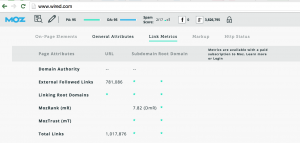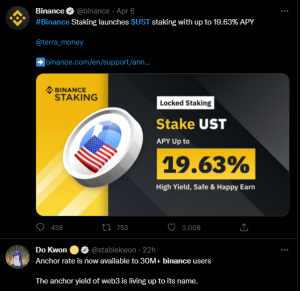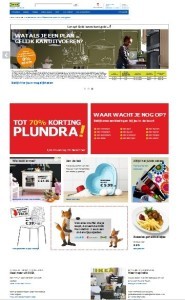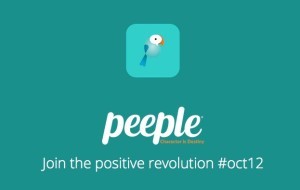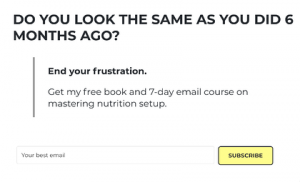 Spring cleaning time
Spring cleaning time
Spring has sprung, as they say. It’s a time to celebrate renewal, rebirth and the anticipation of new tidings to come. The spirit of the season — of casting off the past and preparing for the future — infuses people of all beliefs and faiths. Some honor the day of Passover, some pay respects to a risen Messiah and children across the country enjoy the pagan-inspired rituals of egg hunts and gift-bearing hares. The term “Easter” itself invokes the Anglo-Saxon goddess Ēostre, and the pre-Christian customs for honoring her employ icons that have persisted to the present day, such as rabbits, treats and decorated eggs. So in this season of fresh starts and spring cleaning, it’s a perfect time for job seekers to resurrect and revisit their resumes. With the spate of open jobs, hiring managers and MSPs are busier than ever filing positions. Designing the most compelling and attention-grabbing resume is the best way to get an invitation to the dance.
Hiring managers receive countless resume submissions and job applications for any given position. If you’re posting on a traditional job board, your odds of hearing anything back grow slimmer. Most boards receive 120 applications in a single week. By the time a vacancy has been filled, the hiring company has accumulated, on average, 250 applications.
Statistically, recruiters and hiring managers spend no more than six seconds deliberating on their “fit/no fit” determination — deciding whether you’re an ideal candidate who will innovate, produce and integrate well into an organization’s established business culture. And you may very well be the top talent they’re searching for. The problem is that your resume doesn’t illuminate the points you want to make. Typos, poor formatting, distracting fonts and slick designs will detract from your core skills and qualifications. If you don’t want your CV to end up in the slush pile or waste bin, keep it simple and get ready to cut out some fat.
Overly creative resumes may be overly distracting
The importance of showcasing your personal brand, your skills, your unique perspectives and your cultural fit to prospective employers is critical in the age of social media and social recruiting. Unfortunately, talented professionals can mistake cosmetics for compelling content when building their resume profiles. To take a lesson from social networks: brevity is the soul of wit. Say more, and emphasize only essential points, in less space. Here are the pitfalls of being too creative with your resume format.
- Visually stunning, yet generalized: According to a survey by The Creative Group, 40 percent of HR leaders and hiring executives found that glitzy resumes weren’t job-specific or relevant to the role. Each time you apply for a position, you should customize content and target details that align to the skills, experiences and missions of the companies you’re pursuing.
- Overwhelming: In the movie “Office Space,” one character who worked for a TGIF-type restaurant was continuously punished for not displaying enough “flair” on her uniform. Today, sporting too much flair is the offense. Hiring managers must move fast to conquer the mountains of CVs rising from their desks. A simply formatted, black-and-white resume with standard fonts will make their tasks much easier. Pie charts, infographics, colorful layouts and images will distract them from the information they need to see. If you’re applying for position where creativity, artistry or graphic design skills are paramount, include a separate portfolio of work samples.
- Fluffy and ridden with keywords: With six seconds to make an impression, you want to get to the meat of your resume. Irrelevant, inaccurate or indulgent details shift the reviewer’s focus away from the core skills and traits you want to spotlight. This occurs most often when you submit a generalized resume to each position. And although job boards parse resumes based on the identification of certain keywords, don’t sprinkle them so liberally throughout your resume that they supplant your individual voice and accomplishments.
Put down your pen and take out the shears — it’s time to prune your resume
Most resumes, recruiting leaders reveal, don’t stand out or capture the attention of hiring managers instantly. And they must. This year marks a new dawn for social recruiting, personal branding and interactive hiring processes. Innovation is what growing organizations stress as one of their biggest goals for new talent. And to innovate, traditions must be bucked. Revitalize your job search and your personal brand by trimming these sections from your resume.
Objective
Unless your situation is unique or dynamic — such as dramatic shift in roles or change of industries — you don’t need to state an objective. The hiring manager understands that your objective is to land this job. Instead, include a concise and engaging description of your top skills and accomplishments. And because job boards feed on keywords, you may consider adding a heading for keywords and list the most impactful: you appease the algorithms in the job boards and get them out of the way upfront so reviewers can focus entirely on your abilities, qualifications and skills.
Irrelevant work experience
Let’s say you’re an experienced and pioneering software developer, and you’ve been breaking ground for nearly a decade. Your seasonal job at Disneyland during high school won’t be impressing the recruiters at Google, unless the position requires you to stitch names on mouse ear hats. Stick to the most recent and relevant jobs you’ve held, which involved the skills of the new role.
Personal information
It’s illegal for employers to ask about your personal information: marital status, sexual orientation, religious preferences, age, whether you’re pregnant, your social security number, and so forth. That’s why there’s absolutely no practical reason for including these details on your resume. Your hobbies and extramural interests are also unimportant, and may serve to clutter the essential information a hiring manager is seeking. Only your volunteer work for charities or community organizations is worth mentioning, yet even that information shouldn’t take center stage. Keep it for the end of your resume.
References
If the application requests references, you’ll encounter a form when you begin the submission process. Otherwise, if needed, the hiring manager or recruiter will ask you to provide some. There’s no need to include references in your resume. Succinctness is key, and this content creates more work for readers. In a related caveat, don’t provide the contact information for your existing job. You really don’t want your current manager receiving a phone call from a prospective employer.
Professional links
If you’re including URLs to online work, blogs, websites or social media, make sure they’re professional and relevant to the position. Your LinkedIn profile is an example of a good link. Your celebrity gossip Twitter feed is probably not going to sway decision makers in your favor — unless, of course, you’re applying for a tabloid journalism position at TMZ. Your personal email account should also convey a sense of maturity and professionalism. Try to stick with the accepted conventions of firstname-lastname@serviceprovider rather than something like circusfreak19@hotmail.
Salary details
The purpose of the resume is to showcase your skills, experience, qualifications and achievements. Including salary information not only sends the wrong message, it could bump you out of contention right away. Making too much or too little could be a deal breaker. You also don’t want to put forth the impression that your primary motivation for a job is high pay. You could come across as a flight risk or someone who puts their own needs above the company’s mission.
Modern fonts and typefaces
Readability is paramount to reviewers. Stick to fonts and typefaces that are clear, legible and translate across operating systems. Traditional serif fonts such as Times New Roman, or a sans-serif font like Arial or Helvetica, are always strong recommendations. Avoid fancy, cursive or proprietary scripts that may not display properly on the hiring manager’s computer. It’s best not to impress recruiters with a highly stylized resume format. Dazzle them instead with your past accomplishments, applicable work samples or portfolios.
Avoid jargon
Unfortunately, business has created its own bizarre lexicon and phrasing. To the practical person, not much of it makes sense or comes across appropriately. “Proactive,” for example. The word really didn’t exist until corporate leaders started bandying it about. And it makes little sense. It implies that one can somehow bend the rules of linear time. We all understand that it’s meant to imply preemptive or preventive actions, yet “proactive” is just a hollow buzzword.
Other tired old phrases you should eliminate from your vocabulary include “best of breed,” “go-getter,” “thinking outside the box,” and “synergy.” Try replacing them with strong words such as “achieved,” “managed,” “resolved,” “launched” and “created.” Even then, exercise moderation.
Reasons for leaving
Being asked why you left (or were asked to leave) your previous assignment can be an uncomfortable moment in any job interview. You might think including a description of your former situation would be a “proactive” way to diminish the impact, however it’s usually not. Address the question if it’s asked. Otherwise, you could be presenting an image of yourself that’s not well received by hiring managers. At the very least, it starts them wondering how they’ll be portrayed in a future scenario.
Pictures of you
Sure, LinkedIn emphasizes the importance of including a profile picture. On a resume, however, embedding an image can be problematic, particularly with job boards that rely on automated text parsing. The unusual formatting can compromise the system, which means your resume could come across as garbled, mismatched syntax. If you’ve included a link to your LinkedIn profile, hiring managers and recruiters can take a gander at your headshot if they get really curious.
Spring into action by coordinating with staffing professionals
Staffing curators have become adept at making a company’s message stand out above the unrelenting traffic. They present job openings in creative ways to showcase the personality of the organizations they support, which in turn helps job seekers get a feel for whether a business culture will be a good fit. And they do the same for talent. Not only can staffing professionals help talent develop personal brands, they know the types of employers who would find those brands most attractive. They also know how to educate talent on the best usage of social media, as well as the optimal networks to use for specific employers, industries and markets, based on traffic.
Today’s top talent have a prime opportunity to leverage staffing experts as coaches who can help them propel their careers in new directions for new successes.
(220)



